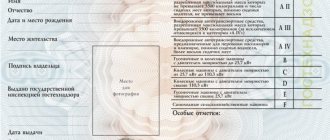More than half a century ago, an agreement on the transport of dangerous goods was concluded in Geneva between European countries. Its goal was to formulate a set of rules for the transport of dangerous goods by road on European roads. In Russia, this agreement was called ADR. Explanation of ADR - road transportation of dangerous goods. On the basis of ADR, national all-Russian rules for the transportation of dangerous goods - POGAT - were formulated. The abbreviation POGAT stands for transportation of dangerous goods by road.
Explanation of ADR
The literal interpretation of the term is the road transportation of dangerous goods, which is carried out every day all over the world. Delving deeper into the concept, it turns out that we are talking about an international legal act adopted in Switzerland (Geneva) more than half a century ago.
It is this generally accepted agreement that regulates the procedure for the transportation process with the participation of specialized transport.
The agreement is valid exclusively on the territory of the countries of the European Union (48 states are included in the list), while other rules apply outside its borders.
It is noteworthy that the UN actively participated in the development of the document, so compliance with it is strict for carriers, forwarders, drivers and other direct or indirect road users for this category.
Violation of the rules specified in the agreement is punishable at the legislative level, for which Articles 1 and 3 of Federal Law No. 259 were provided.
Issuance of a driver's license and its validity period
Rostransnadzor is responsible for training and processing documents for permission to transport hazardous substances. This happens in accordance with Order No. AK-966fs dated September 3, 2013, amended in 2022. How can a driver of category C ADR receive:
- you must submit an application to an educational institution where lectures are given and exams are administered (it must have a license);
- The motorist will learn about the place and time of classes there;
- he pays for lectures by transferring funds to the account of the educational institution;
- listens to the basic course, as well as the additional one he needs;
- takes an exam;
- After successfully passing the test, he is given a document with marks authorizing the transportation of a certain type of cargo.
The certificate will be valid for the next 5 years. All this time, the motorist has the right to transport hazardous substances in accordance with the type of permit. Markings to this effect are available on the reverse side of the ADR.
What is “dangerous cargo”
Speaking on the topic of dangerous goods for transportation, experts first of all draw attention to the fact that this concept means substances, the open transportation of which threatens human life and health, as well as the environment.
Thus, for each such item, a special container and sealed packaging were developed to prevent ignition and/or poisoning of the atmosphere. In addition, almost all types of toxic and flammable waste fall under the definition.
As for the document regulating the rules of transportation, it must indicate the following information:
- type of transport container for a specific class;
- labeling of containers used;
- exact requirements that the exhaust gas used must strictly comply with.
Before starting transportation, it is necessary to study all regulations in order to subsequently avoid problems with the law at the stage of inspection and transportation.
Modification of a vehicle for transportation of flammable liquids (flammable liquids)
- Moving the muffler forward or upward The exhaust system (including tailpipes) must be located or protected so that the load is not exposed to any risk of overheating or ignition.
- Certified spark arrestor
- Reservation of the fuel tank According to paragraph 9.2.4.3 of ADR, which states the requirements for installing protection for the fuel tank of a vehicle. The fuel tank must be located in such a way that when fuel leaks out, it flows to the ground, bypassing the heated components of the vehicle. There must be a strong and sealed cap on the neck of the fuel tank.
- Shielding of electrical wiring The electrical wiring of the car must be protected from mechanical damage, from overheating and ignition, the fastening of the wiring must be strong and reliable. clause 9.2.2.2.2 ADR. This requirement applies to vehicles of type: EX/III, AT, FL, OX.
- Installation of flashing beacons The presence of a beacon is mandatory. The flashing beacon must be turned on for the entire period of movement of the vehicle.
Classification in cargo transportation
Like any other official agreement, ADR has a clear structure, conventionally divided into two main parts - A and B, which are closely related to each other, but cover different issues.
Thus, the first section examines in detail the properties of basic substances, while the second covers the features of their transportation.
In general, the structuring looks like this:
- Introduction including basic principles (Part A).
- Classification of harmful substances that can be used as exhaust gases.
- List of OGs with all relevant restrictions for them.
- Basic requirements for packaging for each specific item.
- Stages of the transportation process.
- Key requirements for preliminary testing of containers used for transportation.
- Rules for loading and unloading, as well as transportation and storage of all categories of hazardous substances.
- Responsibilities of drivers and accompanying freight forwarders and the procedure for processing documents for transportation.
- Technical characteristics that must be met by vehicles used for the transportation of exhaust gases.
The procedure for applying markings for each category of transport for the transport of dangerous goods
As for the classification of hazardous substances itself, it consists of 9 main classes, which are conventionally divided into several subclasses:
- explosive substances;
- compressed, liquefied and dissolved gases transported under pressure;
- flammable and flammable liquids and vapors;
- solids that may ignite on contact with the environment;
- oxidizing cargoes capable of burning and synthesizing oxygen;
- poisons, toxins and infectious products;
- radioactive elements;
- materials with corrosive properties that are dangerous for direct contact;
- any other categories that require some care during transportation.
Marking
The organization of transportation of dangerous goods is carried out in accordance with their labeling. Therefore, each such item or substance must be marked in the prescribed manner and according to certain rules. Based on them, the carrier carries out transportation without deviating from these requirements.
The category of hazardous chemicals must be marked on each container or package. Remains of transported items and trains, transport, packaging materials that have not been cleared of hazardous waste in the prescribed manner should also be marked. It is allowed not to mark packages for transportation if the main mark on the cargo can be seen on the side or end.
Depending on the type of transported substances or products, the marking contains:
The package or packaging bears a danger sign, UN number, name of the cargo to be transported, as well as a class code;
Larger packaging and containers should be marked with the hazard symbol, UN number. If transportation is carried out by rail, then it is also necessary to indicate the emergency card number. If it is not numbered, then the card is located along with the documentation.
Special markings indicating the degree of danger of the transported substances must be on:
- Any packaging next to the designations about permissible manipulations in accordance with GOST 14192. The designation is contrasting and noticeable;
- On the container - on the side, door and lid, if possible;
- On the tank - top, bottom and side.
The danger sign of the transported cargo may be combined with other cargo markings. In this case, the symbol is allowed to be reduced to 25 mm. And the label itself must be enlarged by such an amount that all the required designations fit into it.
Designations may not be applied to things and objects of subclass 1.4, as well as 4.1 and 4.2, if the origin of the substance is plant or animal. In this case, it is enough to indicate the subclass itself and compatibility.
Materials and methods for marking documents must comply with GOST 14192. If transport is carried out by sea, then the markings are made so that they are not erased by being in sea water for three months.
The transport documents indicate:
- The ignition temperature of transported substances, provided that it does not exceed 61 degrees;
- The temperature at which the substance decomposes, if it is not more than 50 degrees;
- Class and subclass, UN classification, sign number, code - classifier;
- Conformity of packaging containers to GOST 26319 (except for classes 2, 7, 6.2, 9.2);
- The inscription “Dangerous only for ... (conditions)”, if the cargo belongs to class 9. It says here what transport is used for delivery, as well as the code for classification.
How can a driver obtain an ADR permit?
In order to transport exhaust gases in the territory of your country and other states where the ADR agreement is in force, you must obtain the appropriate permit.
And the first condition is the presence of three years of driving experience without serious criticism, as well as an open required transport category.
Among other things, the driver will have to undergo special training courses, during which he will become familiar with the labeling system, classification of harmful and dangerous substances, and will also learn the rules for providing first aid in the event of an emergency, the principles of fire extinguishing, disinfection and degassing, and the optimal algorithm of behavior in emergency conditions.
At the place where the ADR certificate is issued, the applicant must submit a certain package of documents, including a certificate of completion of a theoretical course and successful passing of exams based on its results, an open category license and a medical examination of his fitness.
Issuing a document
All students in the courses who successfully pass the final knowledge test (exam) will receive the new type of ADR. However, in practice, there is a possibility of obtaining a certificate of completion of training by completing only special courses. In this case, it will be enough to complete the training program in the disciplines: “transportation of cargo in tanks” or “transportation of radioactive objects” (with passing exams).
The ADR certificate is valid for 5 years. Previously, there was a simpler system for obtaining it. The lectures that drivers had to listen to were shorter, and the educational material to master was easier. It only took one day. This system of obtaining a “crust” did not justify itself due to the fact that the output often resulted in extremely unprepared graduates. The current principles were introduced in 2013.
Rules for transporting dangerous goods in Russia
The agreement in question is valid not only in EU countries, but also in Kazakhstan, Azerbaijan and on the territory of many other former Soviet republics. It also works in the Russian Federation, which has similar rules and requirements.
In addition to them, there are many other internal documents and legal acts in the country, compliance with which allows you to transport exhaust gas within the Russian Federation, and first of all we are talking about the Temporary Instructions regulating transportation by vehicles of various types.
As for the educational program that trains specialists to drive on Russian roads, its development falls under the responsibility of the Ministry of Transport.
Brake system
According to clause 9.2.3.1.1 of ADR, which refers to UNECE Regulation No. 13, it is necessary to meet the requirements for the vehicle’s braking system. This requirement indicates the mandatory installation of an Anti-Lock Braking System (ABS) .
ADR set
- Warning signs with support (2 pcs.)
- Eye wash (1 pc.)
- Signal vest with reflective stripes (1 pc.)
- Portable flashlight (1 pc.)
- Pair of protective gloves (1 pc.)
- Eye protection (glasses) (1 pc.)
- Drainage trap (1 pc.)
- Collection container (plastic box) (1 pc.)
- Shovel (1 pc.)
- Koshma (2 m2)
More detailed information about the sale of tank semi-trailers, prices, the possibility of buying on lease, availability in stock can be obtained on our website in the “TANK SEMI-TRAILERS” section, by phone , or at the company’s office. The information on the site is updated daily and is accurate.
Structure
The document permitting the transportation of harmful substances on the roads of the participating countries used to look like a booklet indicating current information about the driver, the vehicle and the cargo being transported. The modern certificate is a compact plastic card. Driver information and information about hazardous substances permitted for a specific vehicle to be transported are displayed on the sides of the certificate.
The ADR permit is composed of two chapters, which are divided into smaller sections. The first chapter (block A) contains information about products that are classified as malicious, as well as requirements for loading, unloading, escort and transportation.
- Basic provisions.
- Classification. Generally accepted register of dangerous goods.
- Criteria for testing containers for packaging harmful elements.
- Instructions for the container used.
- Standards for transporting unsafe products.
- Travel conditions at each stage of the journey.
- Procedure for registration and receipt.
The second part (block B) contains information about the vehicles used, as well as additional equipment.
- Employee certification standards that relate to loading/unloading/transportation of hazardous materials (dangerous goods).
- Listing of documentation required to perform flights.
- Criteria for vehicles.
- Regulations on the labeling of transported hazardous substances.
Based on the approved requirements, the personnel of the company involved in the transportation, storage or disposal of hazardous products will need to undergo training and obtain a license to work with exhaust gases.
Checking the certificate for authenticity
For many employers, the topic of ADR authentication is a pressing issue, because no one wants to run into scammers.
What you need to pay attention to first:
When applying for a job, the driver provides a permit; the employer can easily check whether it is real.
There are several ways:
- Contact specialists in person;
- Find out by phone;
- Through the Internet.
There is a special section on the website of the Ministry of Transport of the Russian Federation that deals with this. The employer will receive a response about authenticity within a few hours.
It is better to check the authenticity of such a permit in advance, because in the event of an accident, responsibility for the driver’s fake permit will be borne not only by himself, but also by the carrier company that hired him.











